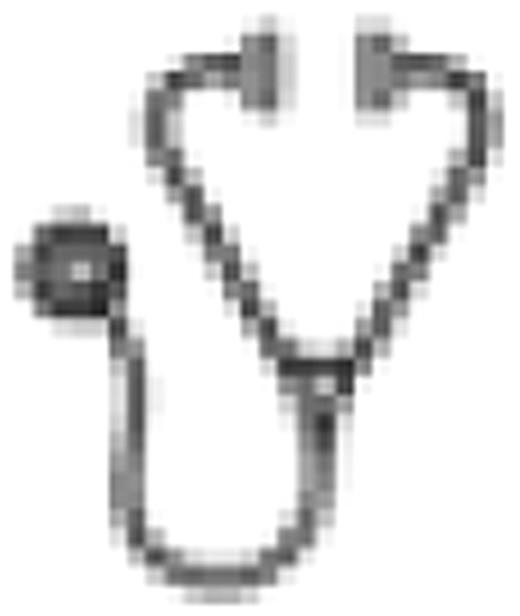Abstract
Abstract 824
In multiple myeloma (MM), the second most common hematological malignancy, high-dose therapy followed by autologous CD34+ stem cell transplantation (ABSCT) is therapy of choice for younger patients. Standard treatment to mobilize hematopoietic stem cells (HSC) is either G-CSF alone or combined with chemotherapy. In the last years the antagonism of the CXCR4 receptor has been identified as a potent mechanism of HSC release from the bone marrow compartment. This mobilization by CXCR4 antagonists is more direct and more rapid than by G-CSF given over 4 to 6 days, and the combination of G-CSF plus a CXCR4 antagonist is superior to G-CSF alone. Furthermore, HSC mobilized using G-CSF and a CXCR4 antagonist have been shown to result in a rapid and sustained engraftment post-transplantation.
POL6326 is a novel, potent and selective CXCR4 antagonist based on the PEM (Protein Epitope Mimetics) technology for intravenous application. In a previous Phase I study in 52 healthy volunteers POL6326 has been demonstrated to effectively mobilize CD34+ stem cells and was very well tolerated.
The goal of the Phase II study in newly diagnosed myeloma patients reported here was to test to what extent POL6326 can be used as monotherapy, infused over 1 or 2h, to mobilize sufficient HSC for subsequent autologous transplantation. In our study the minimum number of HSC required for ABSCT was 2 × 106 CD34+ cells/kg body weight (BW). All patients also received CAD/G-CSF (cyclophosphamide, doxorubicin and dexamethasone) about 10 days after POL6326 and leukapheresis.
The second goal was to determine tumour cell mobilization by polymerase chain-reaction after POL6326 or CAD/G-CSF respectively.
Here we report the first data of this ongoing study. In all doses tested, up to 1200 μg/kg BW over 2h, POL6326 was safe and very well tolerated. During a total number of 38 infusions the only minor adverse event possibly related to study drug was a discrete pruritus of CTC grade 1 at the infusion site during POL6326 administration on two consecutive days. It resolved spontaneously and did not require any medication. This excellent safety and tolerability profile warrants further dose escalation in the ongoing trial.
After first diagnosis, patients received 3 cycles of induction chemotherapy with bortezomib (or thalidomide respectively in one single subject) plus doxorubicin and dexamethasone. 3 weeks after the last injection of induction treatment HSC were mobilized with POL6326 given as a 1 or 2h infusion on up to 4 consecutive days according to an intra-individual dose escalation scheme (from 600 to 1200 μg/kg) with consecutive leukapheresis 30 min after end of infusion.
In all patients (n=16) we observed an elevation of leukocytes and HSC compared to baseline. In 66% of patients sufficient stem cells were mobilized with POL6326 for ABSCT (with a mean of 2.5 × 106 CD34+ cells/kg BW). In 75 % of these subjects 2 leukapheresis cycles were sufficient to reach the minimum number of HSC.
In all patients undergoing ABSCT with HSC mobilized by POL6326, the engraftment was successful. The time to reconstitution ranged from 10 to 19 days (mean 14 days) and was comparable to ABSCT with CAD/G-CSF-mobilized HSC (historical mean of 14 days and a range from 6 to 31 days).
Five patients were evaluated for the presence of tumour cells in peripheral blood before mobilization and in leukapheresis products after treatment with POL6326 and CAD/G-CSF. In 2 of these patients we could not detect any tumour cells, neither in all leukapheresis products nor in all peripheral blood samples. In 2 patients a minor contamination with less than 0.0001% of tumour cells was detected both in the peripheral blood before POL6326 and in the leukapheresis products. Finally, 1 patient showed a similarly minor (<0.0001%) percentage of tumour cells only in the apheresis product after POL6326 treatment. However, a significant mobilization of tumour cells (0.001%) was detected after CAD plus G-CSF in this patient.
Due to the excellent safety and tolerability profile observed for POL6326 in this study the next steps include further dose escalation. These initial data with low doses of POL6326 indicate that this novel CXCR4 antagonist holds the promise to be eventually used as a stand alone therapy not requiring the application of G-CSF. The preliminary findings of the absence or very low counts of tumour cells in the leukapheresis product generated with POL6326 warrant further investigation.
Off Label Use: POL6326 as new CXCR4 antagonist for experimental CD34+ hematopoietic stem cell mobilization. Dembowsky:Polyphor Ltd: Employment. Braun:Cytonet Heidelberg GmbH: Employment. Ludin:Polyphor Ltd: Employment.

This icon denotes an abstract that is clinically relevant.
Author notes
Asterisk with author names denotes non-ASH members.

This feature is available to Subscribers Only
Sign In or Create an Account Close Modal